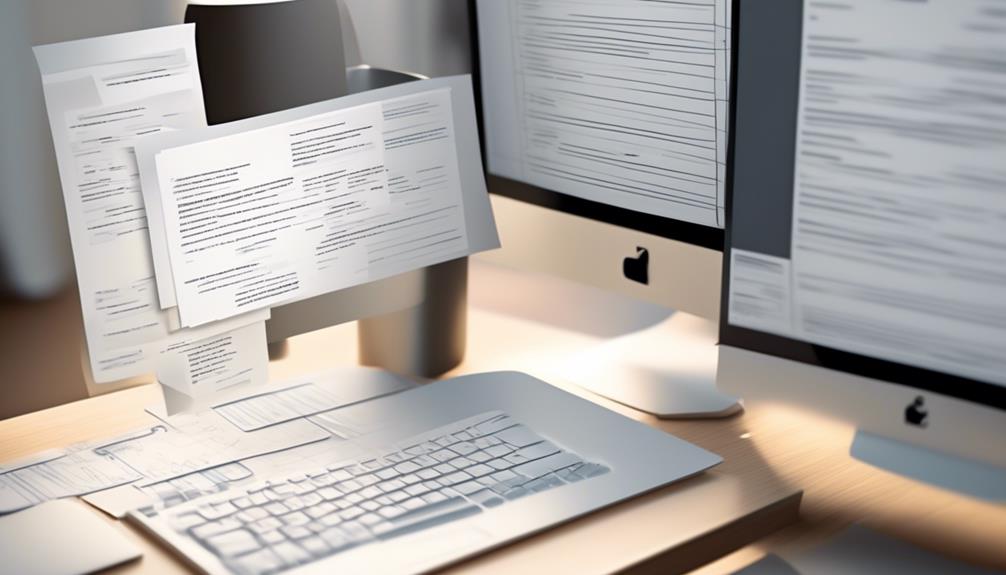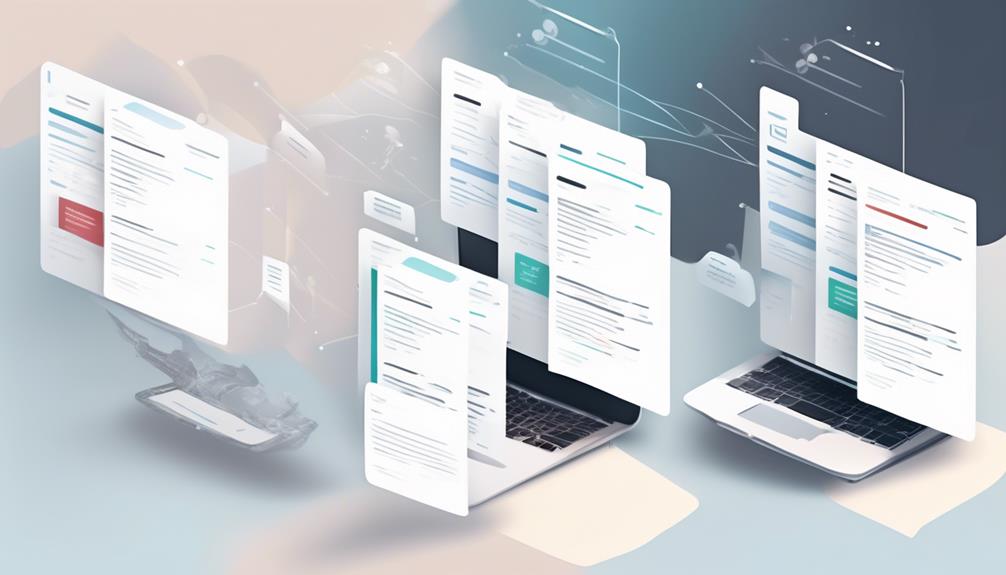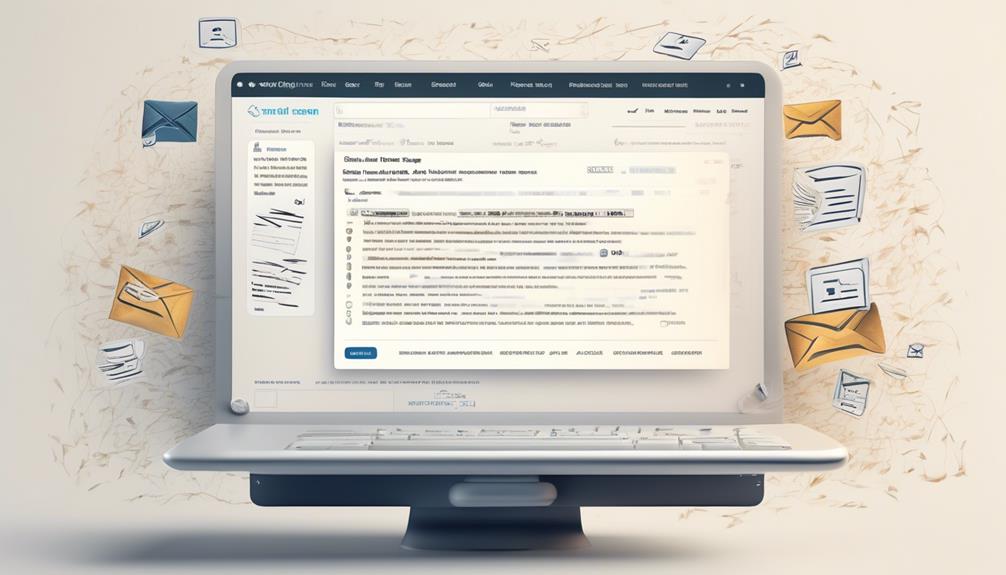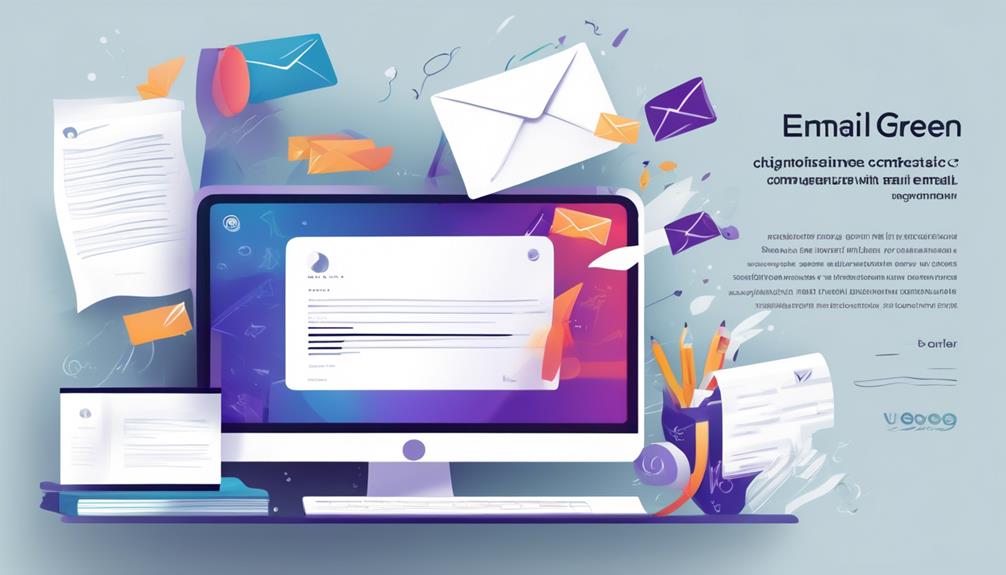Composing an email to two people is like engaging in a careful dance, where each step must be carefully considered. It’s essential to strike the perfect balance in recognizing both individuals with equal importance and consideration.
However, there's more to it than just the opening salutation. Ensuring that the content is clear, concise, and tailored to each recipient's needs is equally crucial.
As we explore the intricate art of crafting such emails, we'll uncover the nuanced strategies that can elevate our communication to new heights.
Key Takeaways
- Address both recipients by name in the greeting to personalize the email.
- Use appropriate titles and salutations based on the recipients' relationship and the context of the email.
- Structure the email in a clear and organized manner, including a clear subject line and a purposeful introduction.
- Tailor the language and content to address each recipient's specific needs, ensuring that each feels their concerns are being directly addressed.
Selecting the Appropriate Salutation
We typically address both recipients by name in the greeting, such as 'Dear John and Jane', to ensure a personal and respectful tone in the email. When it comes to proper email etiquette, using their first name or formal title is essential, especially in business emails. It's crucial to avoid using only their email addresses in the greeting, as this may come across as impersonal.
Additionally, in the subject line, it's important to be mindful and considerate of both persons. When addressing multiple people, especially in a professional setting, it's advisable to use the CC field appropriately.
If the email is intended for friends or acquaintances, a more casual approach like using 'Hi Ann, hi Jack' can be considered. However, in a formal or business context, a common salutation like 'Hello' or 'Good morning' is more suitable.
We should also consider using formal titles like Mr., Mrs., or Dr. when addressing colleagues. These practices not only showcase respect but also contribute to the overall effectiveness of the communication.
Maintaining Clarity and Consistency

When addressing multiple recipients in an email, it's crucial to maintain clarity and consistency in the communication to ensure effective and respectful correspondence. To achieve this, start by addressing both recipients by their names in the greeting, such as 'Dear John and Jane', to acknowledge both individuals clearly.
Use appropriate titles and salutations, such as 'Mr.', 'Mrs.', or 'Ms.', along with formal greetings like 'Good morning' or 'Good evening' to maintain consistency and professionalism in addressing both persons.
Additionally, avoid using overly casual or generic terms when addressing two people and tailor the salutation to each person's individuality and the context of the email.
Make sure the email's subject line and content are consistent and relevant to both recipients, reflecting clarity and consideration for their shared involvement.
Utilize inclusive language and a respectful tone to maintain consistency in the overall communication with both recipients.
Lastly, proofread your email, pay attention to your choice of words, use complete sentences, and capitalize appropriately. Consider utilizing the Blind-copy (Bcc) feature when necessary to maintain privacy and clarity in the communication.
Structuring the Email for Clear Communication
In crafting an email addressed to two persons, it's essential to begin with a clear and descriptive subject line that accurately reflects the content of the email. When addressing recipients, it's important to use a greeting that includes both names, such as 'Dear John and Jane,' to ensure inclusivity and recognition for both individuals.
Throughout the body of the email, structuring the content in a clear and organized manner is crucial for effective communication, especially when addressing a larger group of people. Here are some key points to consider when structuring the email for clear communication:
- Use a clear and descriptive subject line that accurately reflects the content of the email.
- Begin the email with a greeting that includes both recipients' names, such as 'Dear John and Jane.'
- Clearly indicate the purpose of the email and how it pertains to both recipients.
- Be mindful of the salutation and closing to ensure clarity and respect for both recipients.
Addressing Individual Concerns and Inquiries

While addressing individual concerns and inquiries, it's important to use a clear and descriptive subject line that specifically acknowledges the needs of each recipient. This ensures that both recipients understand the purpose of the email and feel that their concerns are being directly addressed. Additionally, when addressing multiple people in an email, the salutation and greeting should be tailored to each recipient's relationship with the sender. Using the recipients' first names, if appropriate, can create a more personalized and friendly tone in the email, while being mindful of their titles and professional status. To effectively address individual concerns and inquiries, the language and content of the email should be tailored to ensure that each recipient's specific needs are adequately met.
| To-Do | Description |
|---|---|
| Use Clear Subject Line | Clearly acknowledge the needs of each recipient in the subject line. |
| Tailor Salutation | Consider the formality of your greeting based on your relationship with each recipient. |
| Personalize Tone | If appropriate, use the recipients' first names for a more friendly tone. |
Concluding With Professionalism
We always conclude our professional emails with a formal closing, such as 'Sincerely' or 'Best regards', to convey a sense of professionalism and courtesy. When addressing a large group or multiple recipients in an email, it's crucial to ensure that the conclusion maintains a high level of professionalism.
Here are some key points to consider when concluding an email addressed to two persons or a large group:
- Use a formal closing: End the email with a professional sign-off, such as 'Sincerely', 'Best regards', or 'Kind regards', to maintain a courteous tone.
- Include contact information: After the closing, provide your contact details, such as your phone number and email address, to facilitate further communication.
- Avoid informal closings: Refrain from using casual sign-offs like 'Cheers' or 'Take care' in professional emails, as they may diminish the formality of the message.
- Proofread for professionalism: Before sending the email, carefully review the conclusion for any grammatical or spelling errors to ensure a polished and professional tone.
Frequently Asked Questions
How Do You Address 2 People in an Email?
When addressing two people in an email, we use both recipients' names in the greeting, like 'Dear John and Jane'. For formal relationships, we include titles like Mr., Mrs., or Dr.
When addressing a larger group, we can use a common salutation like 'Dear Team'. It's important to use the carbon copy (CC) feature to include everyone's contact details.
Be mindful of the salutation and subject line.
How Do You Send an Email to Multiple Recipients?
We send an email to multiple recipients by composing a new email.
We enter the email addresses of the recipients in the 'To' or 'Cc' field.
We write the subject line and the body of the email.
Then, we click 'send.'
It's important to ensure that the recipients are relevant to the content being shared.
Consider using the Bcc option when privacy and confidentiality are a concern.
How Do You Address a Letter to Two Men?
When addressing a letter to two men, we usually begin with a salutation like 'Dear John and Michael' in a formal context. We can also use titles such as Mr., Dr., or Prof. to show respect.
In a more casual setting, we may opt for a common salutation like 'Hello' or 'Good morning.' It's important to consider the tone and formality based on the relationship and cultural norms.
How Do You Address Two Sirs in an Email?
When addressing two sirs in an email, we use the formal salutation 'Dear Sirs' in the greeting. It's important to show respect and professionalism when addressing multiple recipients in a business email.
Consider using formal titles like Mr. for a more polite and appropriate approach. Keeping the tone of writing respectful and adjusting it to the seniority of the recipients is crucial in maintaining professionalism.
Conclusion
In conclusion, when writing an email addressed to two persons, it's essential to use the appropriate salutation, maintain clarity and consistency, structure the email for clear communication, address individual concerns, and conclude with professionalism.
For example, when sending an email to both the marketing and sales teams, it's important to acknowledge the specific goals and challenges of each department in order to effectively align their efforts and achieve a common objective.









